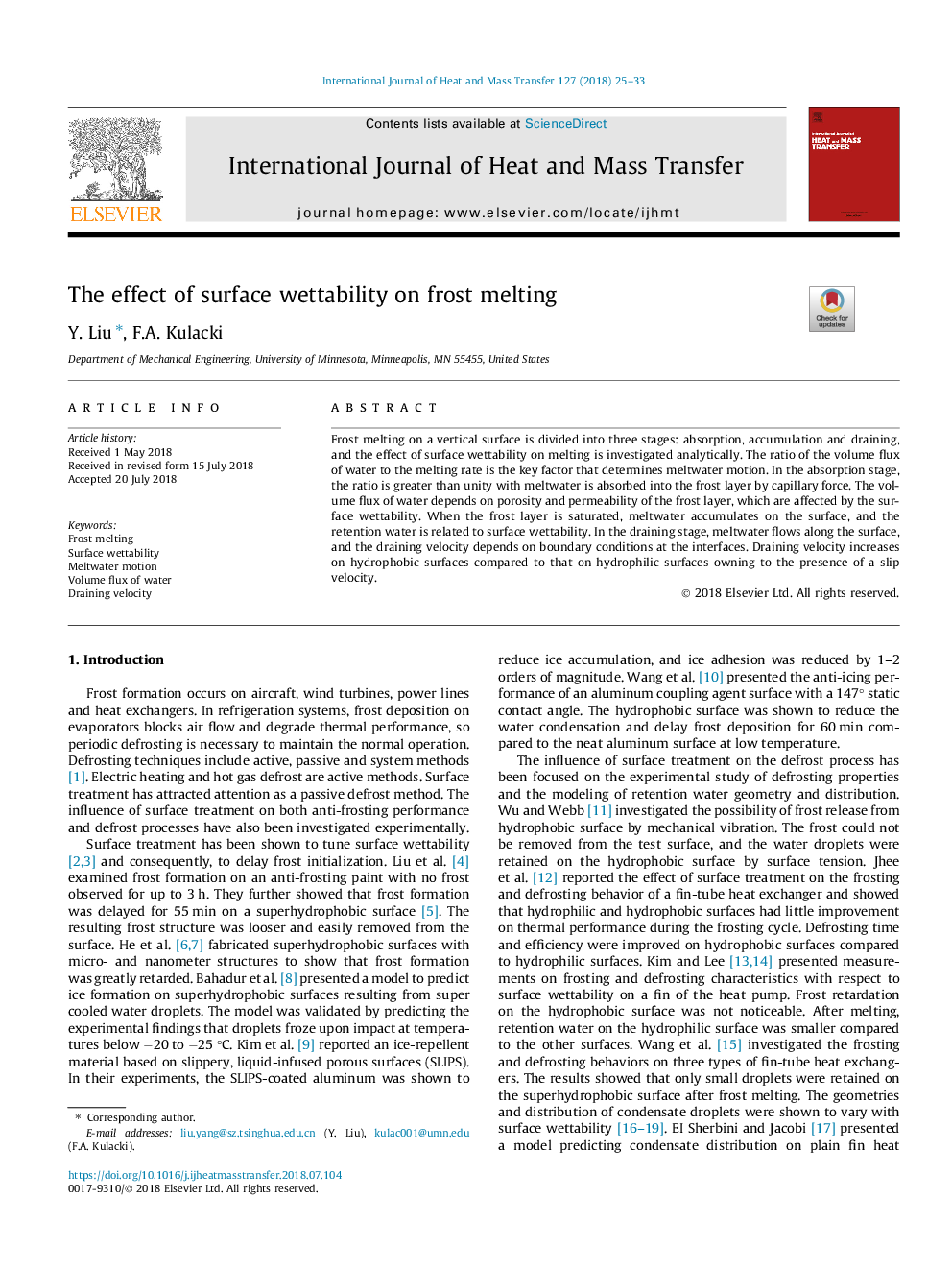| Article ID | Journal | Published Year | Pages | File Type |
|---|---|---|---|---|
| 7053647 | International Journal of Heat and Mass Transfer | 2018 | 9 Pages |
Abstract
Frost melting on a vertical surface is divided into three stages: absorption, accumulation and draining, and the effect of surface wettability on melting is investigated analytically. The ratio of the volume flux of water to the melting rate is the key factor that determines meltwater motion. In the absorption stage, the ratio is greater than unity with meltwater is absorbed into the frost layer by capillary force. The volume flux of water depends on porosity and permeability of the frost layer, which are affected by the surface wettability. When the frost layer is saturated, meltwater accumulates on the surface, and the retention water is related to surface wettability. In the draining stage, meltwater flows along the surface, and the draining velocity depends on boundary conditions at the interfaces. Draining velocity increases on hydrophobic surfaces compared to that on hydrophilic surfaces owning to the presence of a slip velocity.
Keywords
Related Topics
Physical Sciences and Engineering
Chemical Engineering
Fluid Flow and Transfer Processes
Authors
Y. Liu, F.A. Kulacki,
